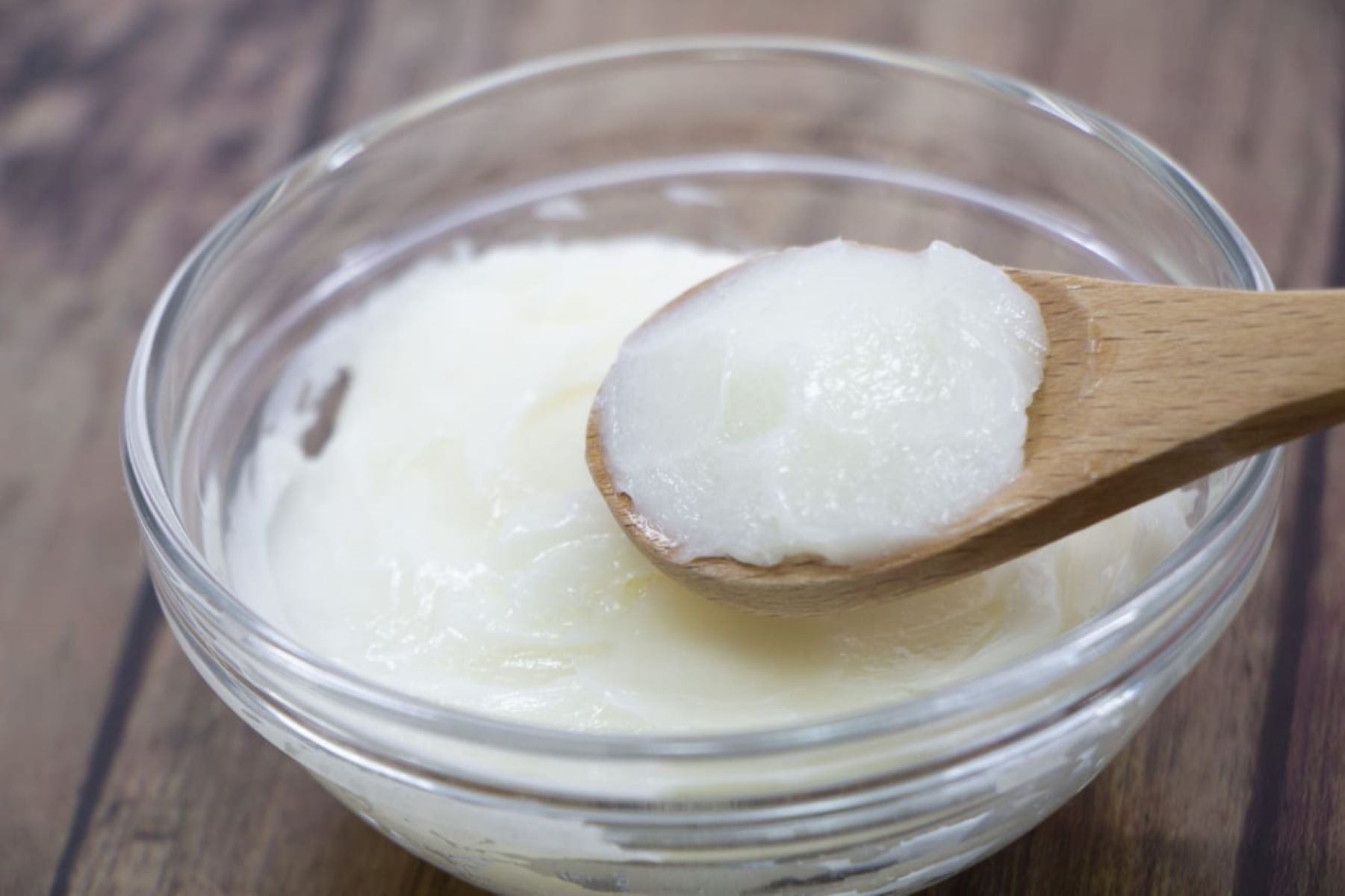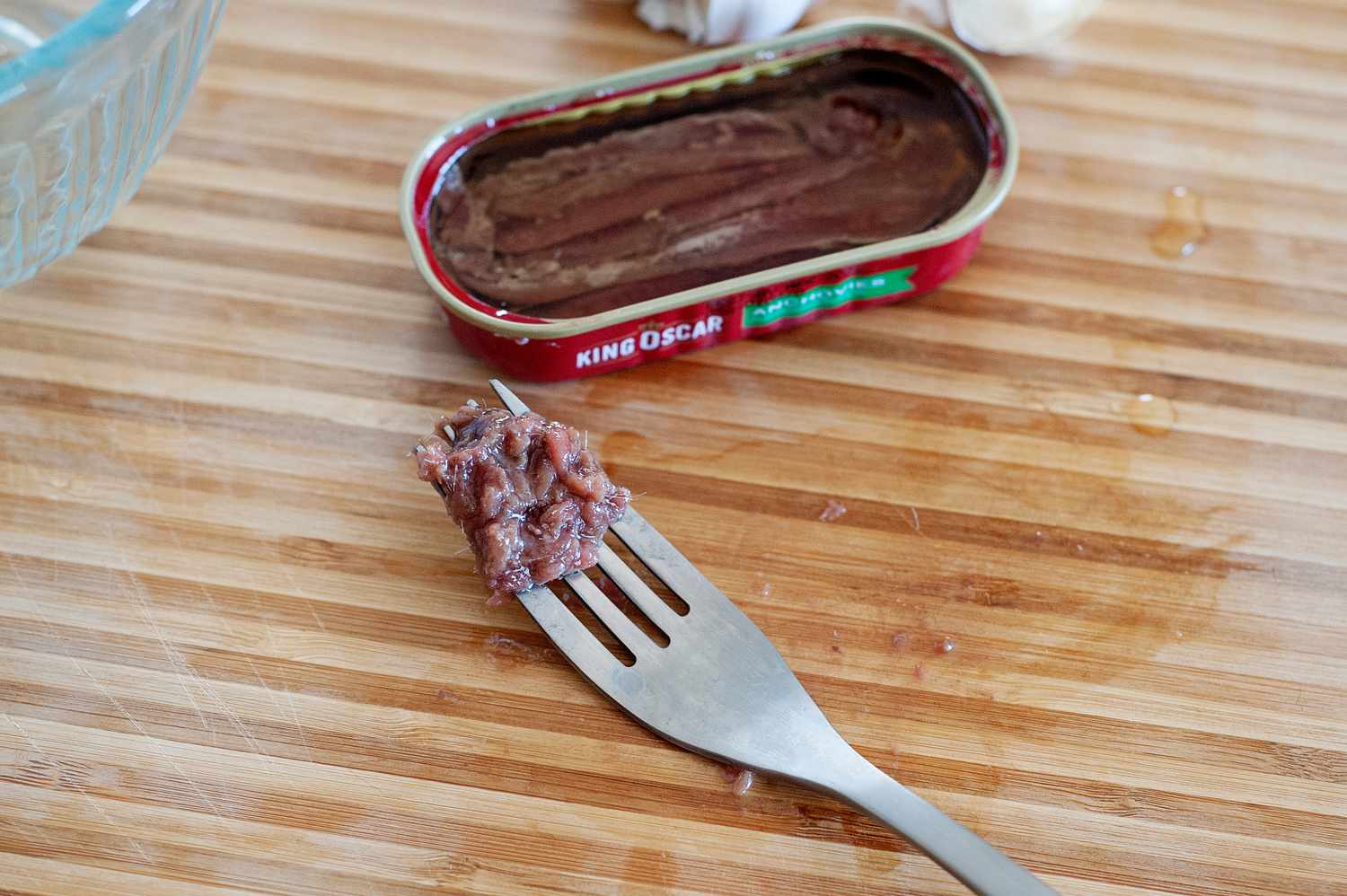

Articles
How To Store Tahini After Opening
Modified: February 28, 2024
Learn the best way to store your tahini after opening with these helpful articles. Prevent spoilage and maintain freshness for longer.
(Many of the links in this article redirect to a specific reviewed product. Your purchase of these products through affiliate links helps to generate commission for Storables.com, at no extra cost. Learn more)
Introduction
When it comes to delicious and healthy ingredients, tahini is at the top of the list. This rich and creamy paste made from ground sesame seeds is a staple in Middle Eastern and Mediterranean cuisines, adding a nutty flavor and velvety texture to dishes. From hummus to salad dressings, tahini is a versatile ingredient that can elevate any recipe.
However, once you open a jar of tahini, it’s important to store it properly to maintain its freshness and prevent spoilage. Improper storage can lead to the development of rancidity and a loss of flavor. In this article, we will explore why proper storage of tahini is important and the factors that can affect its shelf life. We will also discuss various storage options and give you tips on how to keep your tahini fresh and tasty for longer.
So, if you’re wondering how to store tahini after opening, read on to find the best practices to follow.
Key Takeaways:
- Proper storage of tahini is crucial to maintain its freshness, texture, and flavor, ensuring it remains safe and enjoyable to consume. Factors such as temperature, air exposure, and moisture can significantly impact its shelf life.
- Whether refrigerating, freezing, or storing at room temperature, sealing the container tightly, protecting it from strong odors, and checking for signs of spoilage are essential steps to maintain the quality and safety of tahini.
Read more: How To Store Opened Tahini
Why Proper Storage of Tahini is Important
Properly storing tahini after opening is crucial to maintain its quality and prevent spoilage. Here are some key reasons why proper storage of tahini is important:
- Freshness: Tahini contains natural oils that can turn rancid if not stored correctly. Rancidity not only alters the taste and aroma of tahini but also makes it potentially harmful to consume. Storing tahini properly helps to preserve its freshness, ensuring that you can enjoy its full flavor and nutritional benefits.
- Texture: Exposure to air and fluctuating temperatures can cause tahini to thicken and harden over time. By storing it correctly, you can maintain its smooth and creamy texture, making it easier to spread or incorporate into your favorite recipes.
- Longevity: Properly stored tahini can have an extended shelf life, allowing you to use it over a longer period. This is especially useful if you don’t consume tahini frequently or if you have a large jar that needs to last for a while.
- Cost-Effective: Tahini is a delicious and nutritious ingredient, but it can be quite expensive. By storing it properly, you can avoid wastage and ensure that every drop of this precious paste is put to good use.
By understanding the importance of proper storage, you can ensure that your tahini stays fresh, flavorful, and safe to consume throughout its shelf life.
Factors Affecting Tahini Shelf Life
Several factors can affect the shelf life of tahini, both before and after opening the jar. It’s important to be aware of these factors to ensure that you store your tahini properly and maximize its freshness. Here are some key factors that can influence the shelf life of tahini:
- Quality of Ingredients: The quality of the sesame seeds used to make tahini can impact its shelf life. Fresh, high-quality seeds produce tahini with a longer shelf life compared to seeds that are stale or of poor quality.
- Expiration Date: Check the expiration date on the jar before purchasing tahini. This date indicates the estimated period during which the product maintains its optimal quality. Using tahini beyond its expiration date can result in diminished flavor and texture.
- Hygiene: Tahini is prone to bacterial contamination if not handled with proper hygiene practices. Ensure that you use clean utensils and avoid cross-contamination with other ingredients.
- Temperature: Temperature fluctuations can affect the stability of tahini. High temperatures can cause the natural oils to separate, which leads to spoilage and a shorter shelf life. It’s important to store tahini in a cool and dry place away from direct sunlight and heat sources.
- Air Exposure: Contact with air can lead to oxidation and the development of rancidity in tahini. It is essential to ensure that the jar is tightly sealed after each use to minimize air exposure.
- Moisture: Moisture can promote the growth of mold and bacteria in tahini, leading to spoilage. It’s crucial to keep tahini away from areas where moisture can accumulate, such as the refrigerator door or near kitchen sinks.
By understanding these factors and taking appropriate measures, you can prolong the shelf life of your tahini and enjoy its freshness for a longer period. In the next section, we will discuss the recommended storage conditions for opened tahini.
Recommended Storage Conditions for Opened Tahini
Once you have opened a jar of tahini, it’s important to store it properly to maintain its freshness and prevent spoilage. Here are the recommended storage conditions for opened tahini:
- Refrigeration: Refrigerating opened tahini is one of the most common methods to extend its shelf life. The cool temperature helps to slow down the oxidation process and preserve its flavor. Transfer the tahini into an airtight container or seal the jar tightly and place it in the refrigerator.
- Freezing: Freezing tahini is another option to consider, especially if you have a large quantity or want to store it for an extended period. Transfer the tahini into a freezer-safe container, leaving some room for expansion, and store it in the freezer. Thaw the frozen tahini in the refrigerator overnight before using it.
- Room Temperature: If you prefer to keep your tahini at room temperature, ensure that it is stored in a cool, dark, and dry place. Keep it away from direct sunlight and sources of heat or moisture, as these can accelerate spoilage. Make sure the jar is tightly sealed after each use to minimize air exposure.
It’s worth noting that refrigeration and freezing can cause the tahini to thicken and harden. However, this is normal, and the texture will return to normal once it reaches room temperature or is stirred well.
When storing tahini, it’s essential to consider your usage patterns and personal preferences. Choose a storage method that suits your needs and ensures that your tahini stays fresh and enjoyable for as long as possible. Experimentation may be necessary to determine which storage option works best for you.
Next, let’s take a closer look at each storage option and discuss the specific steps to follow for refrigerating, freezing, and storing tahini at room temperature.
Option 1: Refrigerating Opened Tahini
Refrigerating opened tahini is a popular method to extend its shelf life and maintain its freshness. The cool temperature of the refrigerator helps slow down the oxidation process and prevents the development of rancidity. Here are the steps to refrigerate opened tahini:
- Transfer to an Airtight Container: If your tahini comes in a jar with a loose-fitting lid, it’s recommended to transfer it to an airtight container. This will provide better protection against air exposure and help preserve the quality of the tahini.
- Seal Tightly: Ensure that the container or the jar is tightly sealed to prevent air from entering. This will help maintain the freshness and consistency of the tahini.
- Place in the Refrigerator: Store the sealed container of tahini in the refrigerator. Make sure to place it in a part of the fridge where it won’t get exposed to temperature fluctuations, such as the door or near the back of the refrigerator.
- Keep Away from Strong Odors: Tahini can easily absorb strong odors from other foods in the refrigerator. To prevent this, keep it away from strong-smelling items like onions, garlic, and certain types of cheese.
- Stir Before Using: Over time, the natural oils in tahini can separate and rise to the top. Before using refrigerated tahini, give it a good stir to incorporate the oil back into the paste. This will ensure a smooth and creamy texture.
- Check for Spoilage: Regularly check the tahini for any signs of spoilage, such as mold growth, off odors, or changes in texture. If you notice any of these signs, discard the tahini to avoid consumption of spoiled food.
Refrigerated tahini can typically last for several months if stored properly. However, note that the texture may become thicker and harder due to the cold temperature. To soften the tahini, you can leave it at room temperature for a few minutes or gently heat it in a microwave or in a double boiler until it reaches the desired consistency.
Now that you know how to properly refrigerate opened tahini, let’s explore another option – freezing.
Store tahini in an airtight container and keep it in the refrigerator after opening. This will help prevent it from going rancid and extend its shelf life.
Read more: How To Store Tahini
Option 2: Freezing Opened Tahini
Freezing opened tahini is a great option if you want to store it for a longer period or have a larger quantity that you won’t be able to consume within a few months. Freezing tahini helps to preserve its freshness and flavor. Here’s how you can freeze opened tahini:
- Transfer to a Freezer-Safe Container: Pour the opened tahini into a freezer-safe container. It’s recommended to use a container with an airtight seal to prevent freezer burn and maintain the quality of the tahini. Leave some room at the top of the container for expansion when freezing.
- Seal Tightly: Ensure that the container is tightly sealed to minimize air exposure. This will help preserve the flavor and prevent freezer burn.
- Label and Date: It’s essential to label the container with the contents and the date of freezing. This will help you keep track of its storage time and ensure you use it within a reasonable period.
- Place in the Freezer: Put the sealed container of tahini in the freezer. Make sure to place it in a part of the freezer where it won’t be subject to temperature fluctuations or potential crushing by other items.
- Thawing: When you’re ready to use the tahini, remove it from the freezer and thaw it in the refrigerator overnight. Thawing slowly in the fridge helps maintain the consistency of the tahini and prevents any drastic changes in texture.
- Stir Before Use: After thawing, give the tahini a thorough stir to incorporate any separated oils back into the paste. This will help achieve a smooth and creamy consistency.
- Check for Quality: As with any frozen food, it’s important to check the quality of the thawed tahini before using it. Look for any signs of spoilage, such as mold growth, off odors, or changes in texture. If you notice any of these indicators, it’s best to discard the tahini.
Tahini can be kept frozen for several months, but the quality and texture may deteriorate over time. It’s recommended to consume the thawed tahini within a few weeks for the best flavor and consistency.
Now that you know how to freeze opened tahini, let’s explore another option – storing it at room temperature.
Option 3: Storing Opened Tahini at Room Temperature
If you prefer to keep your tahini at room temperature, it is possible to do so while ensuring it stays fresh and safe for consumption. Here’s how you can store opened tahini at room temperature:
- Choose the Right Spot: Find a cool, dark, and dry place in your kitchen to store the opened tahini. Ensure that it is away from direct sunlight, heat sources, and areas prone to moisture, such as near the sink or stove.
- Seal Tightly: After each use, make sure to seal the jar tightly to prevent air from entering. This will help maintain the quality and freshness of the tahini.
- Consider Storage Container: If the original jar doesn’t have a tight-fitting lid, you can transfer the tahini to a container with an airtight seal to provide better protection against air exposure.
- Protect from Odors: Tahini can easily absorb strong odors from other foods in the kitchen. Keep it away from strong-smelling items like onions, garlic, or spices to prevent it from taking on unwanted flavors.
- Stir Before Use: Over time, tahini can naturally separate, with the oils rising to the top. Before using room temperature tahini, give it a good stir to incorporate the oils back into the paste. This will ensure a smooth and creamy texture.
- Regularly Check for Spoilage: Keep an eye on the tahini for any signs of spoilage, such as mold growth, off odors, or changes in texture. If you notice any of these indicators, discard the tahini to avoid consuming spoiled food.
Storing tahini at room temperature is convenient, as it maintains a spreadable consistency without the need for thawing or heating. However, keep in mind that room temperature storage might shorten the shelf life compared to refrigeration or freezing methods.
Remember to use your judgment and consider factors such as the temperature and humidity of your kitchen when deciding whether to store tahini at room temperature. If you live in a particularly hot or humid environment, it’s best to opt for refrigeration to maintain the quality of the tahini.
Now that you’re familiar with all the storage options for opened tahini, let’s move on to some general tips for properly storing tahini.
Tips for Properly Storing Tahini After Opening
To ensure that your tahini stays fresh, flavorful, and safe to consume, follow these tips for properly storing it after opening:
- Seal Tightly: After each use, make sure to seal the jar or container tightly to prevent air from entering. Oxygen can cause the tahini to oxidize and develop an off-flavor.
- Use Airtight Containers: If the original packaging of your tahini is not airtight, consider transferring it to a container with a secure lid. This will provide better protection against air exposure and help maintain its freshness.
- Avoid Cross-Contamination: Use clean utensils when scooping tahini to avoid cross-contamination. Be cautious about accidentally introducing moisture or other substances into the tahini jar.
- Store in a Cool Place: Choose a cool and dark location for storing your tahini. Heat and sunlight can cause the natural oils in tahini to break down, leading to spoilage. Avoid storing it near the stove or any heat-emitting sources.
- Avoid Excessive Moisture: Moisture can lead to the growth of mold or bacteria in tahini. Keep it away from areas with high humidity, such as the refrigerator door or near the sink. Make sure the jar is dry and free from any moisture before sealing it.
- Rotate Stock: If you frequently use tahini, consider purchasing smaller quantities to ensure that you always have fresh tahini on hand. This can help prevent the need for long-term storage and minimize the risk of spoilage.
- Monitor Shelf Life: Tahini does have a finite shelf life, even when stored properly. Pay attention to the expiration date on the packaging and monitor the tahini for any signs of spoilage, such as unusual odor, mold growth, or changes in texture.
By following these tips, you can maintain the quality and extend the shelf life of your tahini, ensuring that it remains a delicious and nutritious ingredient for your culinary creations.
Now that you’re aware of the best practices for storing tahini, it’s important to know the signs of spoiled tahini to avoid any potential health risks.
Signs of Spoiled Tahini
While tahini typically has a long shelf life if stored properly, it can still spoil under certain conditions. Here are some common signs of spoiled tahini to watch out for:
- Mold Growth: If you notice any mold growth on the surface of the tahini or around the edges of the container, it is a clear indication that it has spoiled. Mold can be harmful if consumed and should be discarded immediately.
- Off Odor: Fresh tahini has a nutty and slightly sweet aroma. If the tahini smells sour, rancid, or has an unpleasant odor, it is likely spoiled and should not be consumed.
- Texture Changes: When tahini spoils, its texture may change significantly. It may become grainy, clumpy, or develop an unusual slimy consistency. If you observe any unusual texture changes, it’s best to discard the tahini.
- Unpleasant Taste: Spoiled tahini can have a bitter, rancid, or unpleasant taste. If the flavor is off or significantly different from what you’re accustomed to, it’s an indication that the tahini has gone bad.
- Color Changes: Tahini is typically light beige or tan in color. If you notice any dark spots, discoloration, or an overall change in color, it may be a sign of spoilage.
- Presence of Salivary Amylase: In rare cases, tahini can develop a sticky and stringy texture due to the presence of a naturally occurring enzyme called salivary amylase. While this is not a sign of spoilage, some people may find it unappetizing.
The presence of any of these signs indicates that the tahini has turned bad and should not be consumed. To ensure your safety and the quality of your dishes, it’s essential to discard spoiled tahini and replace it with a fresh jar or batch.
By being aware of these signs and monitoring the freshness of your tahini, you can enjoy this delicious ingredient while safeguarding your health and culinary creations.
Now that you’re equipped with knowledge about spoiled tahini, let’s wrap up the article.
Read more: How To Store Ketchup After Opening
Conclusion
Properly storing tahini after opening is essential for maintaining its freshness, flavor, and safety. Whether you choose to refrigerate, freeze, or store it at room temperature, following the recommended storage practices will help you prolong its shelf life and enjoy its rich and creamy goodness for longer periods.
Factors such as temperature, air exposure, and moisture can affect the quality and longevity of tahini. By understanding these factors and implementing the appropriate storage methods, you can ensure that your tahini remains in optimal condition.
Refrigerating opened tahini is a popular option that helps preserve its freshness and consistency for several months. Freezing opened tahini is a great choice for long-term storage, allowing you to keep larger quantities for an extended period. Storing tahini at room temperature is convenient if you prefer easy access and a spreadable texture.
Regardless of the storage method you choose, sealing the container tightly, protecting it from strong odors, and checking for signs of spoilage are crucial steps to maintain the quality and safety of the tahini.
Remember to use your judgment and consider your usage patterns when deciding how to store tahini after opening. Rotate your stock, monitor the expiration date, and discard any tahini that shows signs of spoilage to avoid potential health risks.
Now that you are equipped with the knowledge of proper tahini storage, you can confidently enjoy this versatile ingredient in your favorite recipes, knowing that it will remain fresh, flavorful, and safe to consume.
Frequently Asked Questions about How To Store Tahini After Opening
Was this page helpful?
At Storables.com, we guarantee accurate and reliable information. Our content, validated by Expert Board Contributors, is crafted following stringent Editorial Policies. We're committed to providing you with well-researched, expert-backed insights for all your informational needs.














0 thoughts on “How To Store Tahini After Opening”